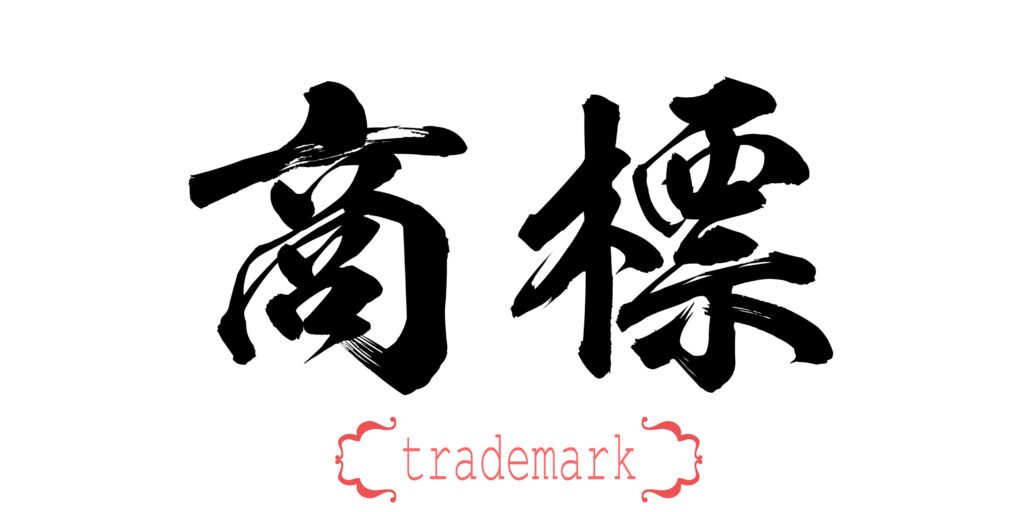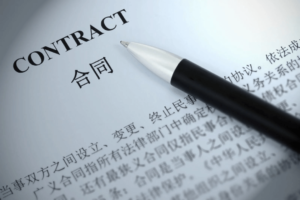China’s trademark subclass system is uniquely complex, often leading to misunderstandings for foreign applicants. This comprehensive guide explores the intricacies of the system, common mistakes made by foreign companies, detailed examples of problematic subclasses, and the challenges posed by translation issues and subclass misclassification. Additionally, it highlights subclasses that are typically misunderstood and explains why these misunderstandings occur.
Table of Contents
ToggleUnderstanding the Chinese Trademark System
China employs a subclass system within each trademark class, dividing products and services into narrowly defined categories. Unlike the international trademark classification system, which often groups similar goods and services together, China’s system can classify very similar items into separate subclasses, deeming them dissimilar. This rigid approach can be baffling to foreign companies accustomed to more flexible systems, leading to potential pitfalls in trademark applications.
Common Mistakes by Foreign Companies
1. Relying on International Registrations
Many foreign companies mistakenly assume that their international trademark registrations, such as those under the Madrid Protocol, will provide seamless protection in China. However, the subclass system in China means that even if a trademark is registered internationally, it may not cover all relevant subclasses in China. This gap can leave certain products or services unprotected, opening the door for local competitors to register similar trademarks in different subclasses.
2. Inadequate Subclass Research
Foreign companies often fail to conduct thorough research on China’s specific subclass divisions. This oversight can result in incomplete trademark applications that do not cover all necessary subclasses, leaving certain aspects of their brand unprotected. Understanding the exact subclass definitions in Chinese is crucial for comprehensive trademark protection.
3. Overlooking Local Nuances
The cultural and market nuances in China differ significantly from those in Western countries. Foreign companies may not fully appreciate the local perceptions of brand names, symbols, and product classifications. This can lead to trademark rejections or conflicts with existing local trademarks that are considered dissimilar in the company’s home country but similar under Chinese regulations.
Detailed Examples of Problematic Subclasses
Here are detailed examples illustrating the rigid approach of the Chinese subclass system:
Class 25: Clothing, Footwear, Headgear
- Subclass 2501: Overcoats, jackets (大衣, 夹克 – dàyī, jiākè)
- Subclass 2502: Suits, trousers (西装, 裤子 – xīzhuāng, kùzi)
- Subclass 2507: Shoes (鞋 – xié)
- Subclass 2508: Headgear (帽子 – màozi)
- Subclass 2509: Socks (袜子 – wàzi)
- Subclass 2510: Gloves (手套 – shǒutào)
- Subclass 2511: Ties, scarves (领带, 围巾 – lǐngdài, wéijīn)
- Subclass 2512: Belts (腰带 – yāodài)
Why They Are Misunderstood: Foreign companies often assume that all types of clothing and accessories within Class 25 are treated similarly. However, China separates these items into distinct subclasses, requiring separate trademarks for comprehensive protection. This leads to confusion when companies file a single application under Class 25, believing it will cover all related products.
Class 12: Vehicles
- Subclass 1202: Automobiles (汽车 – qìchē)
- Subclass 1204: Bicycles (自行车 – zìxíngchē)
Why They Are Misunderstood: Companies might expect that a trademark for vehicles would cover all types of vehicles. However, China’s system requires separate protections for different types of vehicles. For example, Toyota’s CAMRY mark for automobiles did not prevent another party from registering a similar mark for bicycles, highlighting the need for distinct registrations for each vehicle type.
Class 7: Machines
- Subclass 0701: Agricultural machines (农业机械 – nóngyè jīxiè)
- Subclass 0702: Food processing machines (食品加工机械 – shípǐn jiāgōng jīxiè)
Why They Are Misunderstood: Machines are divided into highly specific subclasses. Agricultural machines and food processing machines are treated as distinct categories despite both being types of machinery. Foreign companies may expect broader classifications but need separate registrations for each type of machine to ensure full protection.
Class 10: Medical Supplies
- Subclass 1001: Surgical instruments (手术器械 – shǒushù qìxiè)
- Subclass 1002: Medical apparatus (医疗器械 – yīliáo qìxiè)
Why They Are Misunderstood: Medical supplies are often grouped together in other jurisdictions. In China, surgical instruments and medical apparatus are treated as distinct subclasses. Companies need to file separate trademarks for comprehensive protection in the medical field.
Classes 29, 30, and 32: Food and Beverages
- Subclass 2901: Meat products (肉类产品 – ròu lèi chǎnpǐn)
- Subclass 2902: Seafood (海鲜 – hǎixiān)
- Subclass 3001: Coffee (咖啡 – kāfēi)
- Subclass 3002: Tea (茶 – chá)
- Subclass 3201: Beer (啤酒 – píjiǔ)
- Subclass 3202: Wine (葡萄酒 – pútáojiǔ)
Why They Are Misunderstood: Food and beverages are often marketed together as categories. However, China’s classification system treats these items as distinct, necessitating separate trademark applications for each type of food or beverage to ensure comprehensive protection.
Translation Issues and Subclass Problems in China
One of the major challenges in applying for trademarks in China through the international route (Madrid System) is the potential for translation errors and misclassification of goods/services since all trademark registration in China ultimately is done in Chinese. These issues can lead to significant problems and are key reasons why it is often better to file directly through the national route.
Translation Errors
When filing an international application, the goods/services descriptions are translated into Chinese by the World Intellectual Property Organization (WIPO). However, these translations may not accurately capture the intended meaning or may use terminology unfamiliar to Chinese examiners. This can result in the trademark being granted for goods/services different from what the applicant intended, limiting its scope of protection.
Subclass Misclassification
In the Chinese trademark system, goods and services are divided into subclasses with specific item descriptions. When an international application is examined, Chinese examiners determine the appropriate subclasses based on the translated goods/services descriptions. However, this process can lead to misclassification since all subclasses are in Chinese, either including irrelevant subclasses or excluding relevant ones.
Typical problems arising from subclass misclassification include:
- Over-inclusiveness: The trademark may be granted protection for subclasses and items that the applicant did not intend to cover, resulting in unnecessary fees and potential conflicts with existing marks.
- Under-inclusiveness: The trademark may not be granted protection for all relevant subclasses and items, leaving gaps in coverage and exposing the applicant to potential infringement.
- Enforcement difficulties: If the subclasses and items do not accurately reflect the applicant’s goods/services, it can be challenging to enforce the trademark against infringers operating in related but unprotected areas.
Advantages of Filing Directly in China
By filing directly through the national route, applicants can work closely with a qualified Chinese trademark agent to ensure accurate translations and carefully select the appropriate subclasses and item descriptions. This level of control and oversight is crucial for obtaining a trademark registration that provides the intended scope of protection and minimizes potential issues during enforcement.
Strategies for Foreign Companies
1. Conduct Thorough Research
Before filing a trademark application in China, companies should meticulously research the subclass system relevant to their products or services. Understanding the precise classifications and potential overlaps is essential for effective trademark protection.
2. Engage Local Expertise
Hiring local trademark attorneys or consultants who are well-versed in the Chinese trademark system can provide invaluable guidance. These experts can help navigate the complexities of subclass divisions and ensure comprehensive coverage.
3. File Directly in China
To avoid the pitfalls of relying solely on international registrations, foreign companies should consider filing their trademarks directly in China. This approach allows for a more tailored strategy that addresses the unique requirements of the Chinese market.
4. Monitor and Defend Trademarks
Regularly monitoring the market for potential infringements and being prepared to defend trademarks in Chinese courts is crucial. Proactive enforcement helps maintain the integrity of a brand and prevents unauthorized use.
Conclusion
China’s trademark subclass system is intricate and often counterintuitive for foreign companies. By understanding the rigid approach and taking proactive measures, companies can better protect their intellectual property and succeed in the Chinese market. Comprehensive research, local expertise, and a direct filing strategy are key components to navigating this complex landscape effectively. Ensuring accurate translations and avoiding subclass misclassification can make a significant difference in achieving robust trademark protection in China.
FAQs
China’s trademark system divides products and services into narrowly defined categories called subclasses within each trademark class. This approach is different from the international trademark classification system, which often groups similar goods and services together.
Why is the Chinese Subclass System Challenging for Foreign Companies?
The rigid subclass system can be baffling to foreign companies accustomed to more flexible systems. Very similar items can be classified into separate subclasses and deemed dissimilar, leading to potential pitfalls in trademark applications.
What are Common Mistakes Made by Foreign Companies?
1. Relying on International Registrations
Foreign companies often assume that international trademark registrations under the Madrid Protocol will provide seamless protection in China. However, China’s subclass system might not cover all relevant subclasses, leaving certain products or services unprotected.
2. Inadequate Subclass Research
Many companies fail to conduct thorough research on China’s specific subclass divisions, resulting in incomplete trademark applications that do not cover all necessary subclasses.
3. Overlooking Local Nuances
Foreign companies might not fully understand local perceptions of brand names, symbols, product classifications, and Chinese subclass names, leading to trademark rejections or conflicts with existing local trademarks.
Can You Provide Examples of Problematic Subclasses?
Clothing, Footwear, Headgear (Class 25)
- Subclass 2501: Overcoats, jackets (大衣, 夹克 – dàyī, jiākè)
- Subclass 2502: Suits, trousers (西装, 裤子 – xīzhuāng, kùzi)
- Subclass 2507: Shoes (鞋 – xié)
- Subclass 2508: Headgear (帽子 – màozi)
- Subclass 2509: Socks (袜子 – wàzi)
- Subclass 2510: Gloves (手套 – shǒutào)
- Subclass 2511: Ties, scarves (领带, 围巾 – lǐngdài, wéijīn)
- Subclass 2512: Belts (腰带 – yāodài)
Vehicles (Class 12)
- Subclass 1202: Automobiles (汽车 – qìchē)
- Subclass 1204: Bicycles (自行车 – zìxíngchē)
Machines (Class 7)
- Subclass 0701: Agricultural machines (农业机械 – nóngyè jīxiè)
- Subclass 0702: Food processing machines (食品加工机械 – shípǐn jiāgōng jīxiè)
Medical Supplies (Class 10)
- Subclass 1001: Surgical instruments (手术器械 – shǒushù qìxiè)
- Subclass 1002: Medical apparatus (医疗器械 – yīliáo qìxiè)
Food and Beverages (Classes 29, 30, and 32)
- Subclass 2901: Meat products (肉类产品 – ròu lèi chǎnpǐn)
- Subclass 2902: Seafood (海鲜 – hǎixiān)
- Subclass 3001: Coffee (咖啡 – kāfēi)
- Subclass 3002: Tea (茶 – chá)
- Subclass 3201: Beer (啤酒 – píjiǔ)
- Subclass 3202: Wine (葡萄酒 – pútáojiǔ)
What Are Translation Issues and Subclass Problems in China?
Translation Errors
When filing an international application, the goods/services descriptions are translated into Chinese by the World Intellectual Property Organization (WIPO). These translations may not accurately capture the intended meaning or use terminology unfamiliar to Chinese examiners, resulting in limited scope of protection.
Subclass Misclassification
Chinese examiners determine the appropriate subclasses based on the translated goods/services descriptions. Misclassification can lead to:
- Over-inclusiveness: Covering irrelevant subclasses, leading to unnecessary fees and conflicts.
- Under-inclusiveness: Missing relevant subclasses, leaving gaps in protection.
- Enforcement difficulties: Challenging to enforce trademarks against infringers in related but unprotected areas.
What Are the Advantages of Filing Directly in China?
Filing directly through the national route allows applicants to work closely with a qualified Chinese trademark agent for accurate translations and appropriate subclass selection. This approach minimizes potential issues during enforcement.
What Strategies Should Foreign Companies Adopt?
1. Conduct Thorough Research
Research the subclass system relevant to products or services for effective trademark protection.
2. Engage Local Expertise
Hire local trademark attorneys or consultants familiar with the Chinese trademark system.
3. File Directly in China
Consider filing trademarks directly in China for a tailored strategy.
4. Monitor and Defend Trademarks
Regularly monitor the market and be prepared to defend trademarks in Chinese courts.
Understanding and navigating China’s unique trademark subclass system is crucial for foreign companies. By conducting thorough research, engaging local expertise, filing directly in China, and monitoring trademarks, companies can better protect their intellectual property and succeed in the Chinese market.








